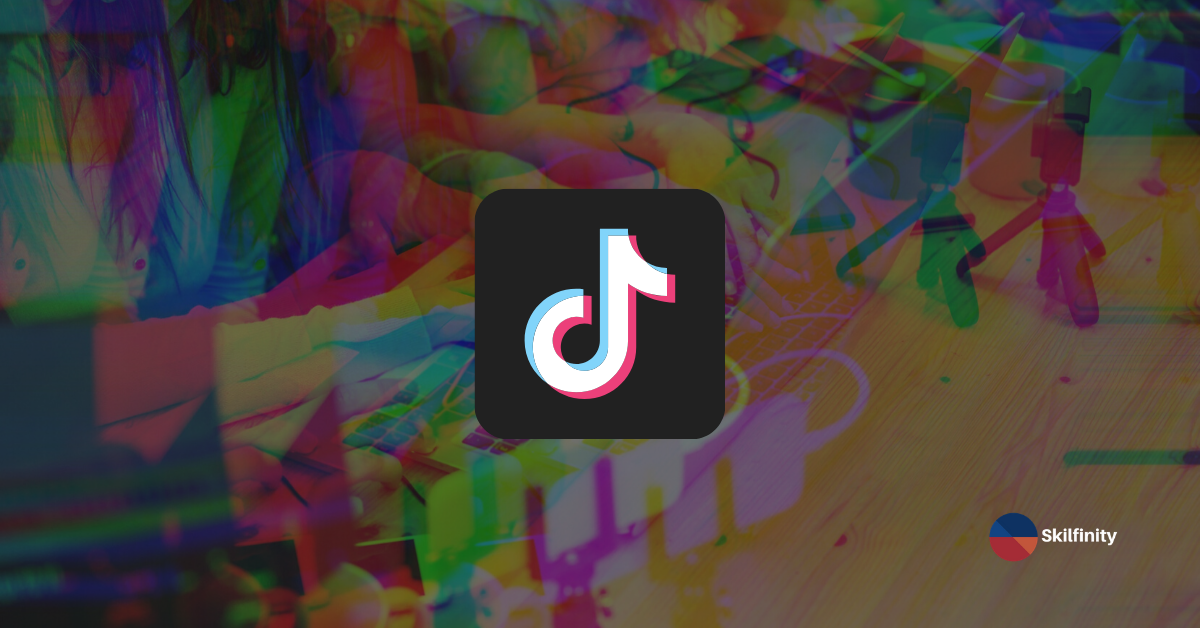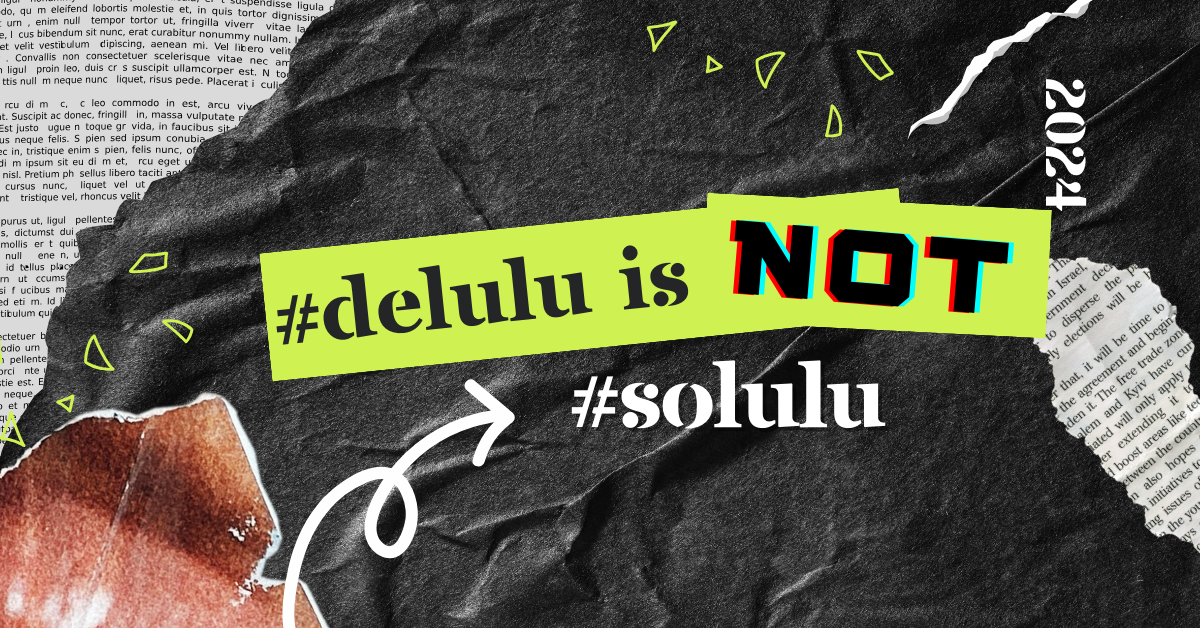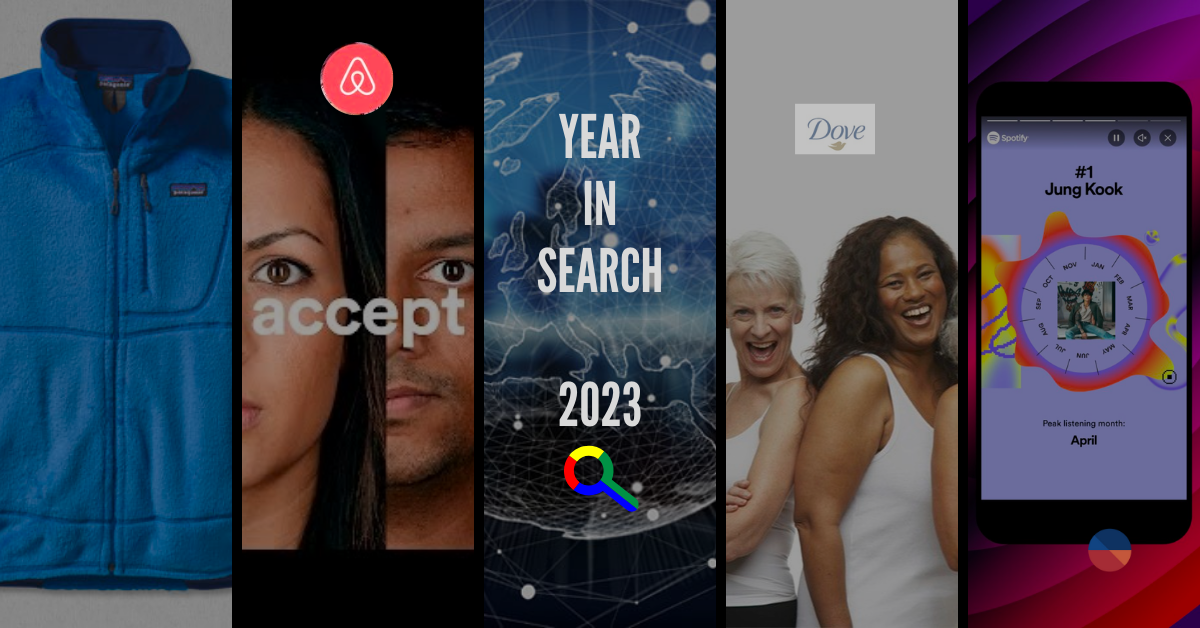TikTok Marketing for Brands
Short-form user-generated content has radically changed how we consume entertainment, and TikTok plays into a lot of these current trends in terms of meeting consumers’ need for self-expression and creativity.
Douyin, was launched by ByteDance in China. It became world’s most valuable startup, in 2016, merged with Musical.ly and made its overseas debut as TikTok, since 2018!
TikTok makes content discovery central to its experience—which is what allows videos to blow up so fast.
What does that mean?
TikTok allows people to create short, snappy videos and share them around the world. The video feed plays the minute the app opens, instantly sucking viewers in. Users can follow their favourite creators, but they don’t have to for the feed to be filled automatically with curated clips.
So why is TikTok important for your brand and should you as a marketer add it to your media mix? Let’s explore TikTok Marketing for brands.
Table of Contents
How popular is TikTok?
Brands:
- The TikTok app has more than 1.65 billion downloads to dateThe Washington Post hired a TikTok app expert.
- Buzzfeed is recruiting teens to cover the election on TikTok.
- Everyone from Snoop Dogg to Reese Witherspoon, have opened accounts.
- Chipotle, Nike, Skittles, Fenty Beauty, Pepsi, and Universal Pictures are among the many companies that have already been lured by TikTok’s warpspeed success.
Numbers:
- TikTok is the sixth largest social network now
- The TikTok app has more than 1.65 billion downloads to date
- TikTok was installed more than 738 million times in 2019, making it the second most downloaded app of the year, surpassed only by Whatsapp
- According to Sensor Tower, Q4 2019 was TikTok’s best quarter yet, with 219 million app installs
- Third-party data from Apptopia suggests that TikTok’s in-app purchase revenue topped $50 million in Q4 2019. Sensor Tower estimates closer to $87 million. For comparison, in the same period Snapchat earned $561 million.
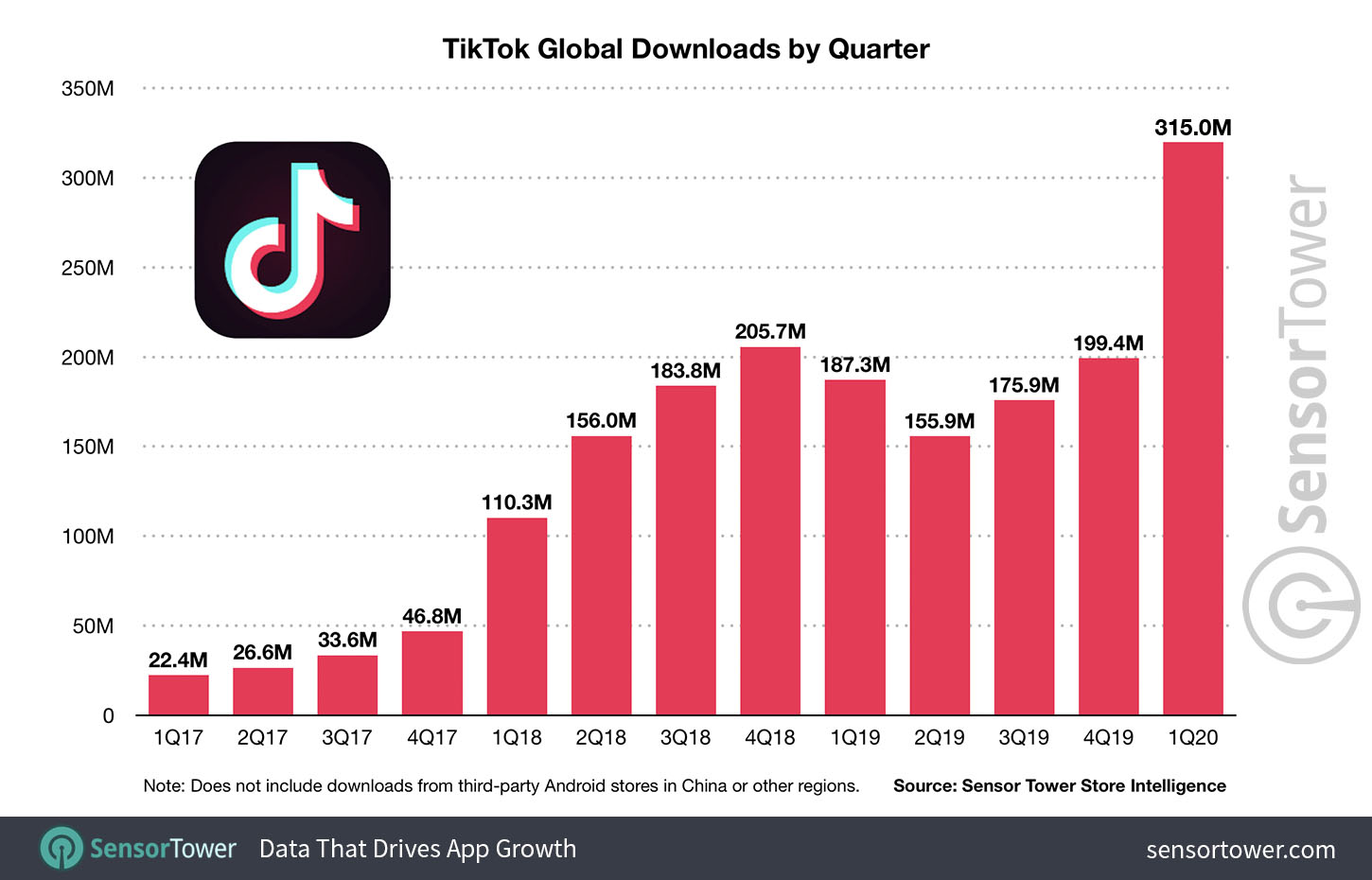

Source: Sensor Tower
TikTok for Brand Marketers
TikTok usage Stats
- According to a leaked deck from TikTok, the app has 800 million monthly active users, 500 million of which are in China
- Douyin, the Chinese version of TikTok, has 400 million daily active users, according to ByteDance’s annual report. By comparison, Snapchat reported 218 million global DAUs for Q4 2019.
- According to company documents, the average user opens TikTok more than 8 times a day
- 52% of TikTok users can be categorized as status seekers, finds a survey by Global Web Index
According to ByteDance’s annual report, in China:
- 14.89 million “knowledge-based content videos were shared on the app last year
- 24.18 million videos using the ‘baby’ filter, received 210 million likes
- 3.265 million videos using the ‘aging’ filter, received 1.02 billion likes
TikTok demographics data
Global Web Index stats show that TikTok penetration is seemingly at its highest in Asia, where over a third of users aged 16-64 had an account.
TikTok penetration by region, Q2 2019
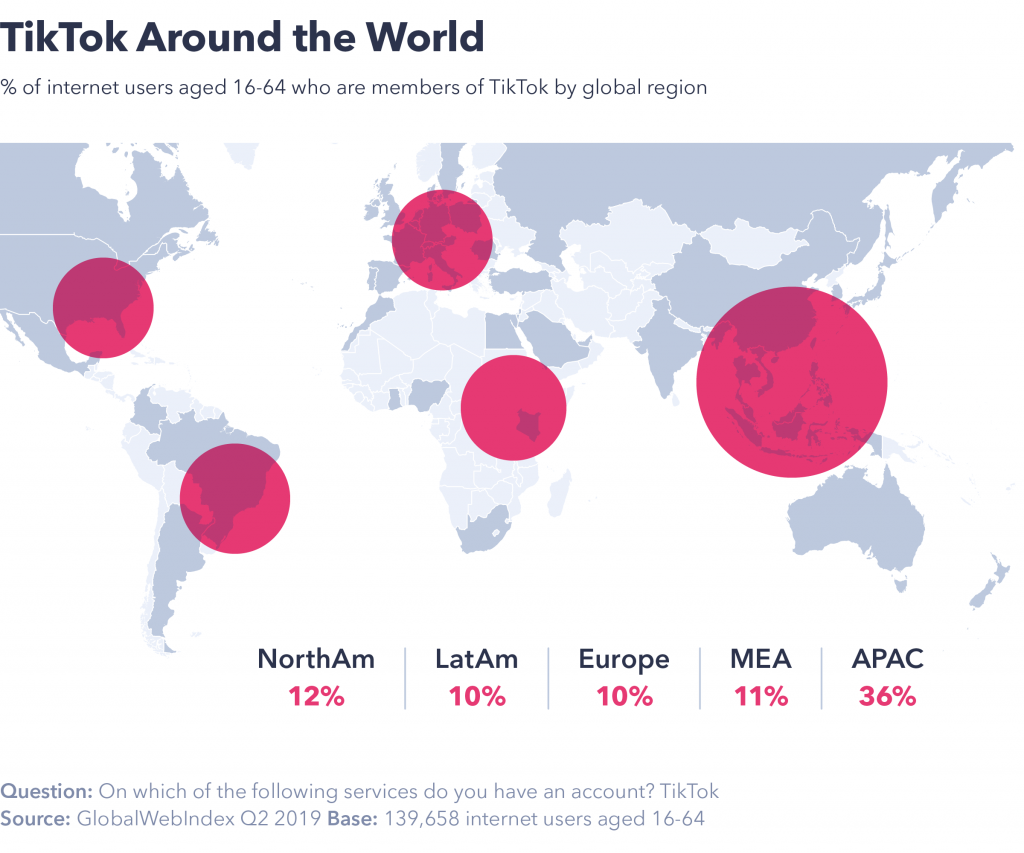

Source: Global Web Index
India
- India led markets with 323 million app installs in 2019, despite its brief ban last year, representing 44% of global installs, Sensor Tower reports
- More than 120 million MAU (monthly active users) in India as of June 2019
China
- According to the leaked deck from TikTok, 500 million of TikTok’s global MAU are in China
- Chinese users spent more than 3X amount U.S. users spent in 2019, dropping upward of $122.9 million
- TikTok is more popular with older generations in China when compared with other places. According to a survey by Global Web Index, 60% of TikTok users are in the 25-44 age bracket, while outside of China, 43% of TikTok-ers are 16-24 years old.
United States
- According to TikTok, there are 30 million MAU in the U.S.
- With 46 million app installs last year, US accounted for 6% of global downloads
- American users spend an average of 46 minutes a day on the app, totalling 37 billion video views a month.
- 34% of daily active users in the U.S. record videos on a daily basis
- TikTok’s biggest age group in the US is 18-24 year olds, which account for 42%. That’s followed by 13-17 year olds at 27%.
- In the U.S. 13-26 year olds are as likely to use TikTok as Facebook and Twitter
- Approximately 60% of users in the U.S. are female, versus 40% male
Britain
- Britain follows China and the United States for spending on the TikTok app, accounting for 2% with $4.2 million
Other Significant Geographies – Brazil, Germany & Japan
- In Brazil and Germany (both reckoned at around 3 million Android TikTok users), TikTok users skew female. This is particularly pronounced in Brazil, where the ratio is close to 2:1.
- Japan is a relatively small sample of 6 million users, though this affluent, highly-digital, Asian can perhaps give us an indication of TikTok’s success in particular market conditions.
- Japan sees a near-perfect gender split. Interestingly, usage seems relatively evenly split through various age groups, with only a slight weighting towards younger demographics.
- Interestingly, there are nearly as many 40-something users as there are 20-something users, with usage trailing off very slightly among presumably career-focused 30-somethings. Teenage users are, however, the largest constituency.
- Teenage users in Japan also show one of the strongest gender imbalances, skewing significantly female. Among older demographics, we see the opposite trend.
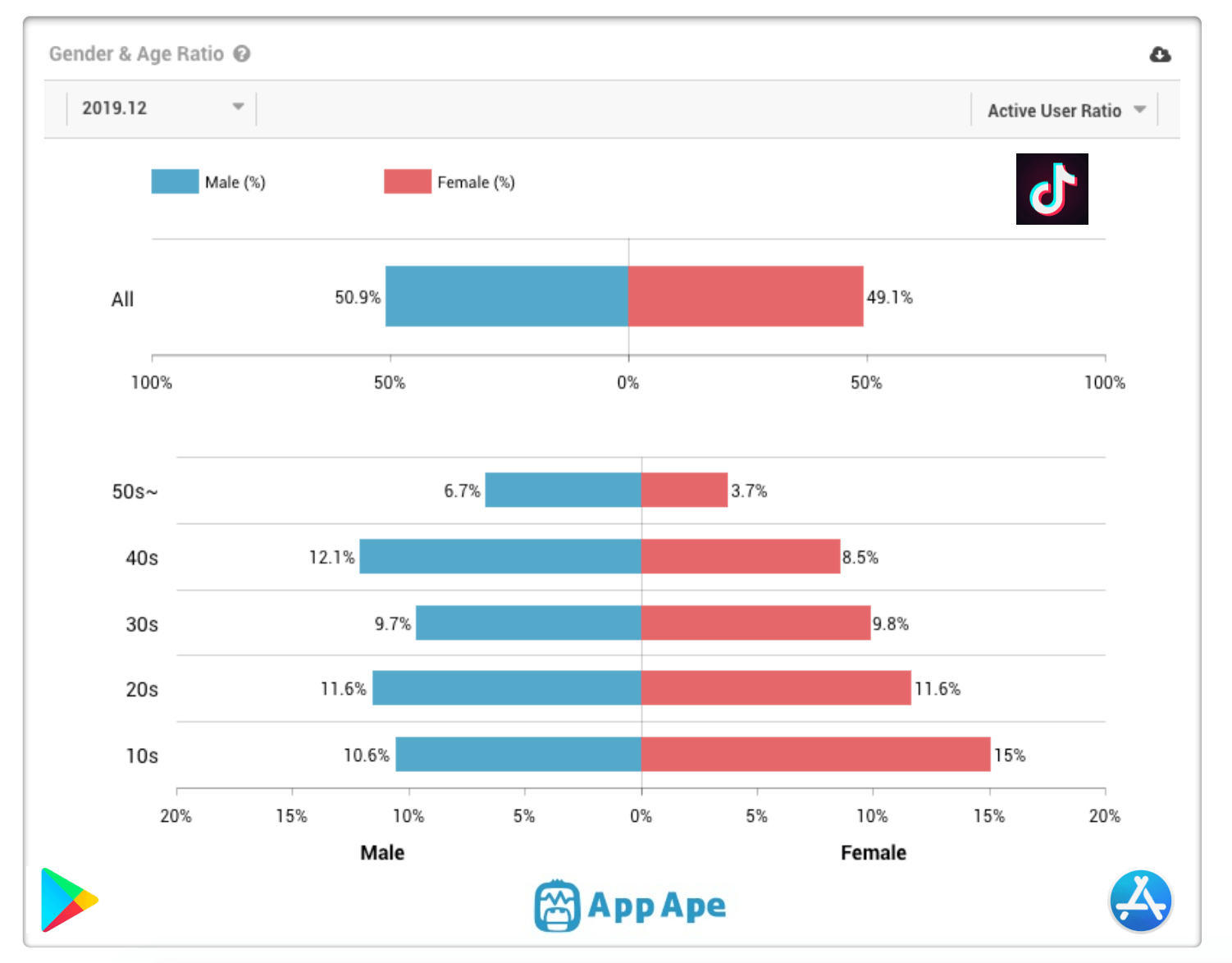

Japanese TikTok demographics
TikTok User Behaviour
Status Seekers:
With Community at its heart, 52% of TikTok users can be categorized as status seekers, 1.3 times the global average.
They agree that they:
- Strive to achieve more in life,
- Tend to buy premium versions of products
- Are brand conscious
- Like to be respected by their peers.
Anything that can enhance TikTok users online reputation or status is likely to be evaluated positively and this quality would motivate them to promote their favourite brand online and they ain’t afraid of voicing their opinions.
Community Driven
TikTok members are not only aware of brands and willing to buy brands they see advertised, they can also be heavily influenced by the community’s voice around them.
Brand Retention of popular Social Networks Vs TikTok
25% of apps downloaded around the world are only ever used once. Over 50% of user churn occurs in the first month, after which we see an incrementally smaller percentage of users dropping out each month.
Average app retention rates, 2012-2019
By September 2019, TikTok’s rate had risen to 39%. For comparison, Facebook’s retention rate was 45%, Instagram’s was 44% and Snapchat’s 32%.
TikTok for business
Seemingly, the initial exposure of any video on the platform is based on geo-location. Because of this, there’s a lot of potential for smaller businesses to benefit from being on TikTok to really increase local brand awareness.
Rewatches, video completions, shares, comments, and likes all seem to be strong indicators to the TikTok algorithm. In addition, vitality or performance of each video is based on interactions and hence chances of the video going viral irrespective of small follower base or even the age of the video is a possibility as well.
There are three main ways that brands can market on TikTok.
- They can create their own channel and upload relevant videos through their channel
- They can work with influencers, to spread content to a broader audience
- They can pay to advertise on TikTok
TikTok introduced a self-serve ad platform for advertisers in early last year. With its current user base, it definitely presents an enormous opportunity to advertisers. It’s also less saturated with ads than its older counterparts.
However, because TikTok Ads is still in beta, the process of setting up ads isn’t entirely online yet. As it stands, the most challenging aspect of advertising on the platform seems to be the lack of guidance available due to how new the platform is.
The visual app—which allows users to edit and share 15-second videos with built-in filters, effects, and music—has truly shaken up the marketing world with its unprecedented virality.
TikTok Ad Budget
Because ads on the platform are new and rare, they come at premium costs that start at an average of $10 per CPM and can go up to $300,000 total budget for larger campaigns.
Moreover, TikTok campaigns require a minimum investment of $500 so they might not be a great fit for your business if you’re looking for more affordable and predictable advertising options.
TikTok Ad Formats
When it comes to designing the creative assets for your ad, the process is fairly straightforward. TikTok ads can be horizontal, vertical, or square videos and images. The best thing about the ads platform is a tool called the Video Creation Kit, which provides video and image templates you customize using your existing images. It also comes with 300+ options for free background music.
TikTok currently allows the following ad types: brand takeovers, in-feed ads, hashtag challenges, TopView ads, branded lenses and influencer based campaigns.
Brand Takeovers
A TikTok brand takeover immediately hooks user attention with full-screen static or dynamic display, delivering a strong visual impact for your brand. You can use a static image, GIF, or video of 3-5 seconds. The embedded links can be connected to websites landing pages or challenges and hashtags within the platform. It delivers beyond guaranteed impressions.
In-Feed Ads
Embedded on “For You” feed, In-feed Ad is a typical video ad that you see on Facebook or Instagram. Moreover, the ad is displayed as an up-to-60-second video with sound-on.
Hashtag Challenges
Hashtag challenges on TikTok are a strong and popular tactic for community-building because they are fun, interactive and often popularized through influencers’ wide-ranging networks.
TopView Ads
This ad type comes in video format, and immediately shows after opening the app. Due to its strategic placement, it is considered a visually impactful way to reach and engage your budding audiences.
Branded lenses
Design a TikTok filter related to your business. Users can select the lens when choosing a filter for their video and it’s live for 10 days. The lens is automatically included in the top 10 trending list and it comes in 2D and 3D. TikTok is currently working on an AR version.
Custom influencer
Just as it on Instagram, TikTok also has influencers with a massive number of followers. These influencers are very powerful, and they can inspire their fans in many ways.
When you partner with TikTok influencers, you’ll gain more exposure and also reach out to your target audience more quickly. Although be mindful that in some select locations, you need to organize influencer partnerships on TikTok.
TikTok’s Competitors
TikTok has fresh competition in 2020.
Byte, a new TikTok rival from a Vine cofounder, danced to the top of Apple’s app store on Jan 24.
Google just jumped into the short-form video game with Tangi. In Asia, Tencent-backed Kuaishou is gaining popularity, while its sister app, Kwai, is popular in Brazil.
And of course, Facebook and Instagram will also look to close in on TikTok this year.
Top TikTok users
The title of most-followed TikTok account) now lies with American singer and social media personality Loren Gray, who with 38 million followers (January 2020) outranks TikTok itself (36.5 million followers).
The second-most followed individual is also Amerian, Zach King, with 31.9 million followers who specialises in digital sleights of hand, with Baby Ariel in third with 30.2 million. The latter was chosen as one of Time magazine’s most influential people on the internet in 2017, and one of Forbes’s top influencers the same year. As with Loren Gray, she also a singer, having crossed over from lip-syncing.
The highest non-American is impressively-bequiffed Indian teenager Riyaz Aly, with 27.3 million followers. Our top-10 list also includes Indians Nisha Guragin, Awez Darbar, and Arishfa Khan. These three are described respectively as social media personality, choreographer, and actress (a job title also shared by Canadian Kristen Hancher in fifth place).
Conclusion: TikTok Marketing – A Marketers POV
Generally, younger consumers are the first to embrace new technologies and services, but eventually, the critical mass starts pouring in. As the age of the user base notches upward and the platform matures, TikTok and fellow social media will likely see a wave of fresh content and new creators. This, of course, will significantly shift user-viewing habits and preferences.
Continuing to understand this young, community-driven audience as they evolve will be key in knowing how to approach them. It has taught marketers one thing, it’s that experimenting with new platforms and thinking outside of the box can help you engage new audiences and boost brand awareness.
Bottom line is TikTok isn’t going anywhere. Get on board.

